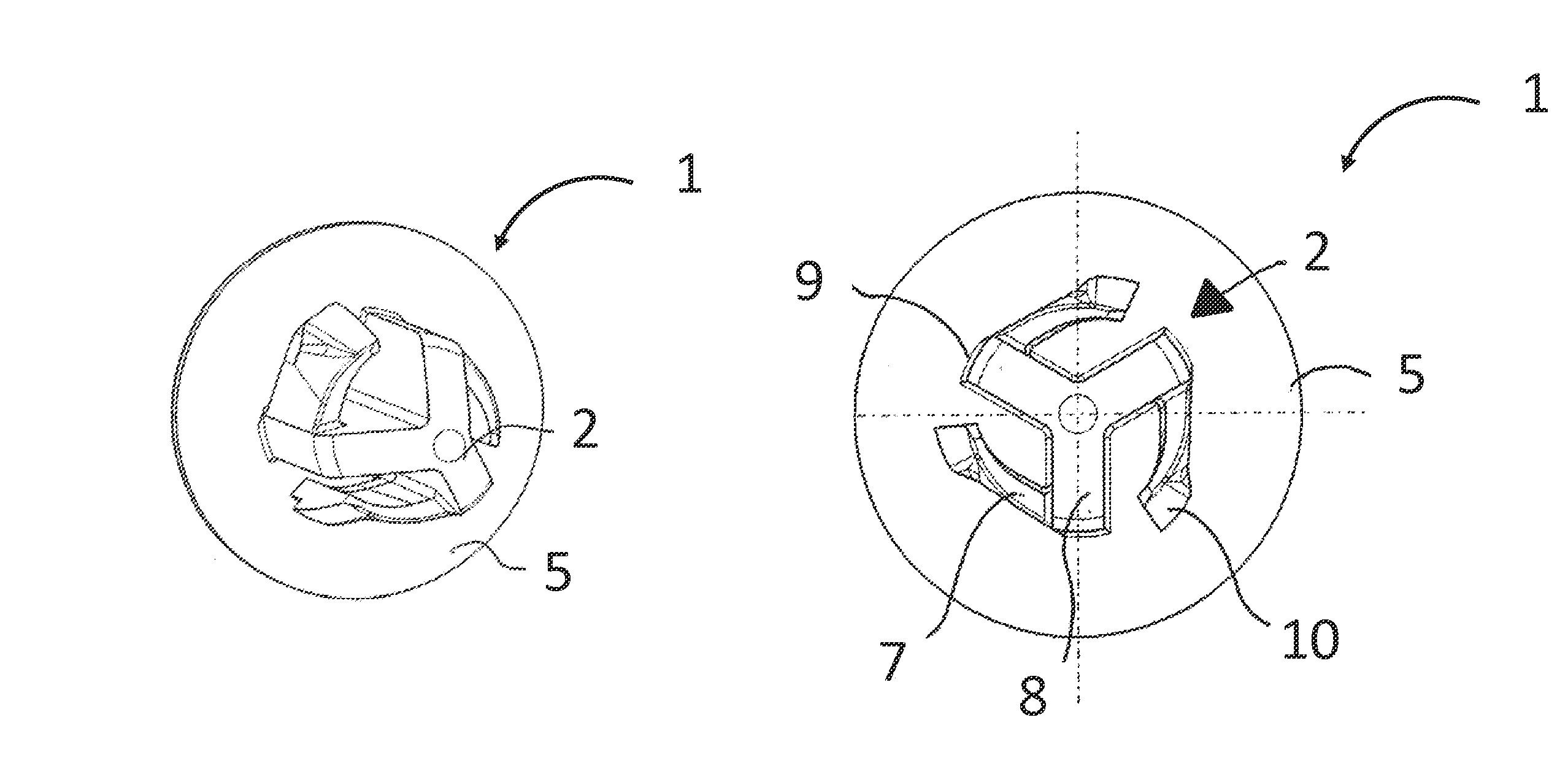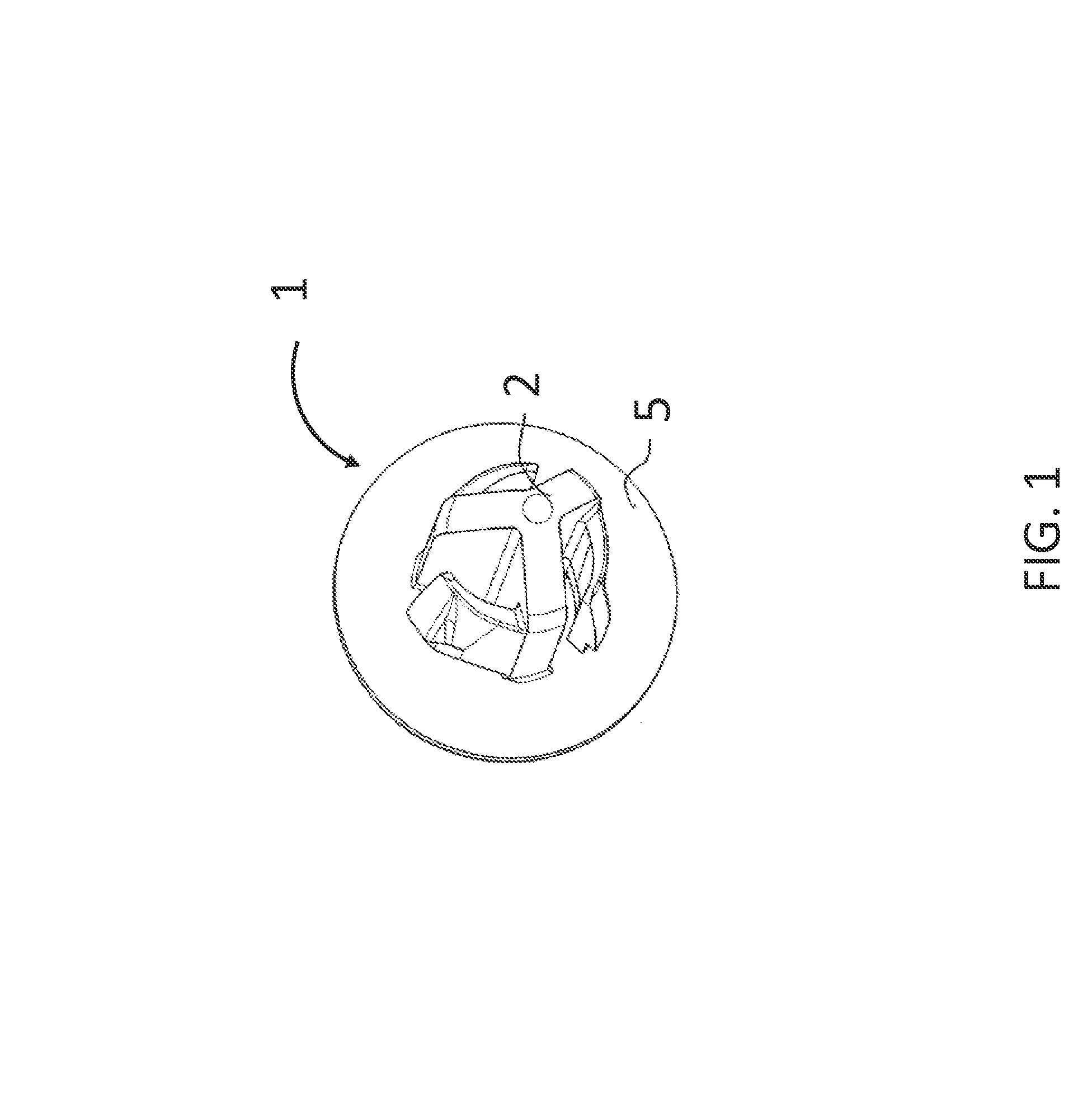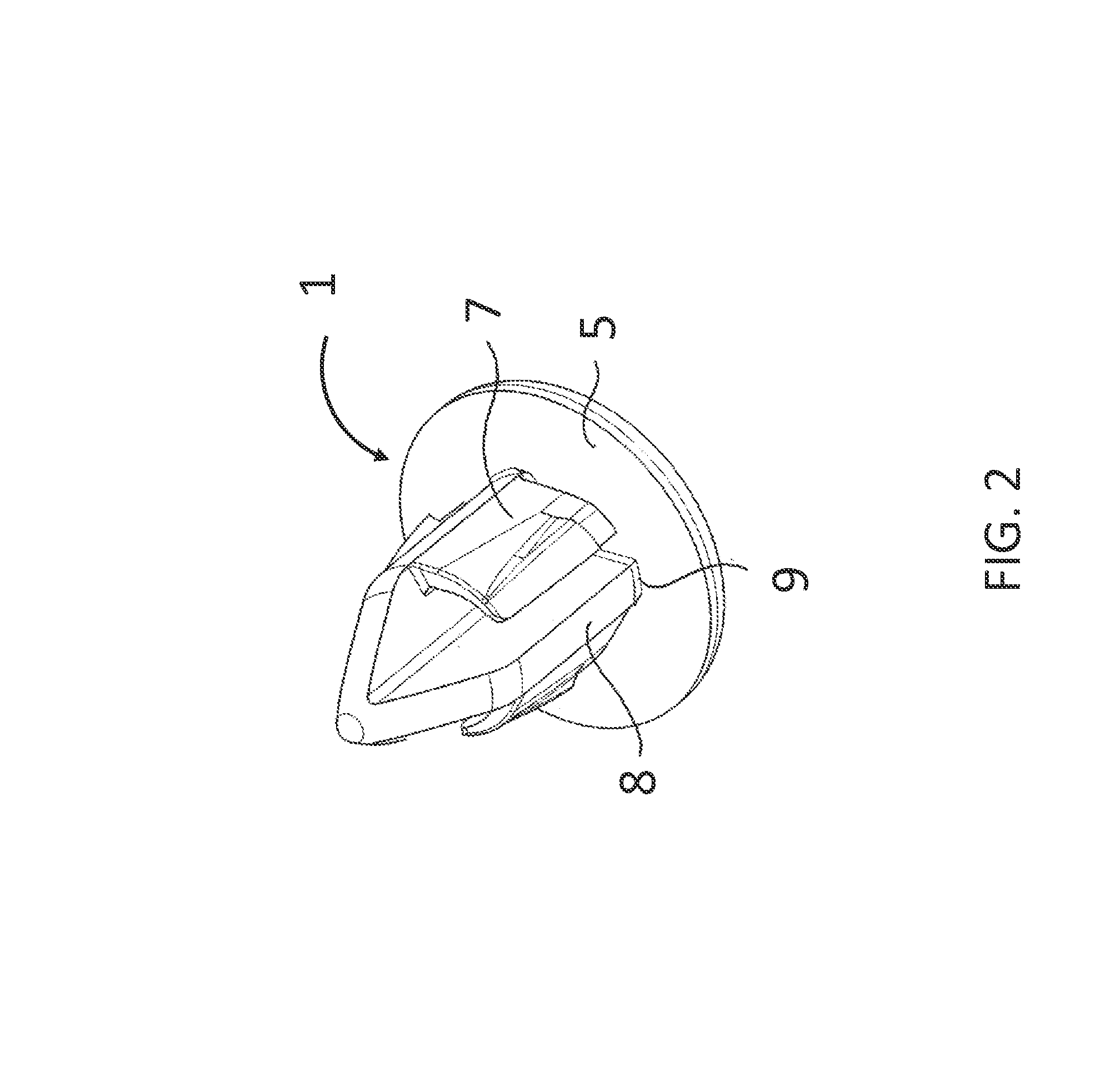Fastening device
a technology of fastening device and guiding element, which is applied in the direction of snap-action fasteners, screws, garments, etc., can solve the problems of affecting the operation of the fastening device, so as to achieve the effect of simple process, simple means, and easy scaling up a structur
- Summary
- Abstract
- Description
- Claims
- Application Information
AI Technical Summary
Benefits of technology
Problems solved by technology
Method used
Image
Examples
Embodiment Construction
[0036]In FIG. 1-9 is described an embodiment of a fastening device 1 according to the invention. In FIG. 1 is described the fastening device 1 comprising a main portion 2 and a head 5. It is most clearly shown in FIG. 6 that the main portion 2 is provided with a base end portion 3 and a distal end portion 4. The main portion 2 comprises guiding elements 6 and resilient elements 7. In the disclosed embodiment comprises the guiding element three vanes 8. The construction of the main portion 2 is probably most clearly shown in FIG. 4 wherein a cross sectional view of the main portion 2 comprising the guiding element 6 is shown as the lined area comprising three vanes 8 and three resilient elements 7 attached to the vanes 8. The vanes 8 are spaced apart equidistantly from each other on the surface of the head 5 such that the peripheral parts of the bases 9 of the vanes 8 (most clearly shown in FIG. 2) are located at an equidistant distance from the centre of the main portion 2 (most cle...
PUM
 Login to View More
Login to View More Abstract
Description
Claims
Application Information
 Login to View More
Login to View More - R&D
- Intellectual Property
- Life Sciences
- Materials
- Tech Scout
- Unparalleled Data Quality
- Higher Quality Content
- 60% Fewer Hallucinations
Browse by: Latest US Patents, China's latest patents, Technical Efficacy Thesaurus, Application Domain, Technology Topic, Popular Technical Reports.
© 2025 PatSnap. All rights reserved.Legal|Privacy policy|Modern Slavery Act Transparency Statement|Sitemap|About US| Contact US: help@patsnap.com



